ULTIMATE TRAVEL GUIDE TO VISIT RANI KI VAV IN PATAN, GUJARAT
ONE OF THE UNESCO WORLD HERITAGE SITES IN INDIA
THE MAGNIFICENT STEPWELLS OF GUJARAT
First, when I saw Dada Harir ni vav I thought it was magnificent. Then when I saw Adalaj Vav, I thought it was much more than magnificent. And now, when I visited Rani Ki Vav, I almost fainted!!!
As my friend rightly said, Rani ki Vav (The stepwell of Queen), is actually the Rani of Vav-s (Queen of Stepwells) and another friend also rightly said, its Rani-ki-Wow!
Ornate pillars of Rani ki Vav
HISTORY OF RANI KI VAV, PATAN
Rani ki Vav was built by Queen Udayamati, wife of King Bhimadeva I, in 1063 CE, as a memorial to her husband. It took 20 years to complete its construction in the banks of River Saraswati.
RE-DISCOVERY & EXCAVATION OF RANI KI VAV PATAN
Before its excavation by ASI, it was used by the locals are a regular pond, as none of the architectural or sculptural beauty was visible from above ground level. Under British Raj, Archeologists Henry Cousens and James Burgess visited it in the 1890s it was still buried and all they could see were only a few pillars over the ground.
Before its excavation by ASI, it was used by the locals are a regular pond, as none of the architectural or sculptural beauty was visible from above ground level. Under British Raj, Archeologists Henry Cousens and James Burgess visited it in the 1890s it was still buried and all they could see were only a few pillars over the ground.
It was only in 1958, more than a decade after India's independence, ASI (Archaeological Survey of India) started digging up this place and what came out was mind-blowing awesomeness. It has multi-storeyed pavilions, but it is not accessible today for the general public, as per the rules of ASI, so as to protect the monument.
THE UNESCO WORLD HERITAGE SITE OF RANI-KI-VAV, PATAN
In 2014, Rani ki Vav Patan was listed as one of the UNESCO World Heritage Sites in India along with the Great Himalayan National Park. The other 3 UNESCO World Heritage Sites in Gujarat are Historic City of Ahmedabad, Pavagadh & Champaner, and Dholavira, a Harappan City. Rani ki Vav has been declared a UNESCO World Heritage Site for its speciality in Water Conservation while being an outstanding example of the artistic and technological height of stepwell tradition. More on it below!
WATER CONSERVATION AT RANI KI VAV PATAN
Why is Rani ki Vav special? Rani ki Vav has been built in an arid region, in the middle of a desert. So water conservation has been important here since time immemorial. In fact, Dholavira, a Harappan civilization site located close by is surrounded by 16 reservoirs all around it. Several centuries after Harappan Civilization, in the 10-11th C CE, water conservation in this region has gotten so improvised and stylized as well, with the Rani ki Vav being the epitome of the architectural finesse and sculptural beauty of the stepwells meant for water conservation. This makes Rani ki Vav so special, that it has been listed as a UNESCO World Heritage Site.
RANI KI VAV VIRTUAL TOUR
RANI KI VAV PHOTOS
Let me stop talking now, let's go over to the Rani ki Vav photos and you'll know why I almost fainted in its awesomeness!!!
RANI KI VAV ARCHITECTURE
Since the entire Rani-ki-Vav from its wide opening to the narrow tank & well in its depths, it is considered to be in the shape of an inverted temple.
The well of Rani ki Vav is in the East-West direction. Its dimensions are 64 x 20 x 27 metres. The entrance is on the eastern side. Well, before the discovery of this well, the entire well was submerged within the ground. So even today, only the topmost point of the well is just above the ground level.
The fourth level is the lowest level where the rectangular tank is located. It is 9.4m x 9.5m at 23m depth. There is a well at the westernmost depths, of 10m diameter at 30m depth.
Originally there were 292 carved pillars here, of which 226 remain. The typical stepped well, true to its name, has regular steps and small turreted steps that look like little pyramids which helps people to either climb quickly (during a journey break) taking only the large steps or slowly (while carrying multiple pots filled with water) taking the small steps as well. Plus there are 4 pavilions at regular intervals to help with shade thanks to the local climatic conditions.
The steps help to reach the water stored in the tank. Then there's another level - the well! The well is 7 storey deep from the ground level and it is possible to draw water from above! There are 8 ornate brackets to support hauling up water!
SCULPTURES OF RANI-KI-VAV, PATAN
The sculptural beauty of Rani ki Vav is exceptional and unbelievable. There are 500 principal sculptures and more than 1000 smaller ones.
In those seven levels of pavilions and 4 storeys filled with fabulous sculptures. They depicted several genres from Gods, Goddesses, stories of Puranas, apsaras, adityas etc. One genre was of Dasavathara i.e., the 10 re-incarnations of Lord Vishnu. I managed to spot & identify 7 except Matsya, Kurma and Narasimha! Another genre was of Apsaras & Adityas, the celestial beings. The Apsaras are incredibly beautiful with so many poses, beautifying themselves with eyeliner (kajal), lipstick, bindi, earrings while looking at the mirror!
Then there are also these geometric patterns which are way too similar to the textile in the area - Patan Patola, which is a handwoven, double ikat fabric that imitates these very patterns.
Apsaras of Rani ki Vav - fixing her hair & applying kajal looking at the mirror
Dasavatara sculptures in Rani ki Vav - Balarama & Parasurama
Right at the end of the pathway that leads to the well, in the depths of the well, straight in front of you, on the well's wall is this highly ornate, Lord Vishnu in Anantasayana (reclining) posture. This is the Hindu god carving at the center of the Rani-ki-Vav.
Miniature sculptures atop that reclining Vishnu
Patterns of Rani ki Vav that reminded me of Patan Patola fabric patterns
RANI KI VAV ON ₹100 CURRENCY NOTE
The new set of currency notes of Indian Rupees has various UNESCO World Heritage Sites in India, printed on them including Hampi ruins, Konark Sun Temple, Sanchi Stupa, Red Fort etc. In that series, the Rupees Hundred notes have Rani ki Vav printed behind them, now fondly called Rani ki Vav note!
TIPS FOR VISITING RANI-KI-VAV, PATAN
1. You need pre-approved special permission from the authorities with a valid reason if you want to visit the depths of the well.
2. If you have no permission to visit the depths, make sure to carry binoculars or hi-def camera in order to see the detailed sculptures in the lower section
3. It is hot, super hot, more so in summer. But it is located in Rural India. Wear suitable but appropriate clothing. For women, lightweight cotton pyjamas/long skirts with waist/high length, short-sleeved/sleeveless tops are suitable. Wear sunscreen and hats.
4. Rani ki Vav is located in the Indian state of Gujarat where the local language is Gujarati. However most locals easily understand and can communicate in Hindi & English.
RANI KI VAV TICKETS (Updated Feb 2022)
Rani ki Vav ticket prices: ₹.35/- for Indians & SAARC Nationals; ₹.550/- for foreigners
Rani ki Vav Patan Online Booking: Rani ki Vav is managed by Archaeological Survey of India. Tickets can be bought online on ASI's official website via ASI - PayUMoney app. Choose Vadodara and choose Rani-ki-Vav Patan. Choose the date and proceed to give your ID details and pay. Tickets can also be bought at the gate.
WHEN IS THE BEST TIME TO VISIT RANI KI VAV, PATAN
The best time to visit is actually throughout the year. While in summer it can be super sunny (as much as 50°C), it is the time when the water level is the lowest and the sculptures in their depth can be seen clearly. That said, if you aren't used to that kind of heat, it is probably better to skip summer which is Apr-June in this region. Anytime between July and March is a good time to visit Patan. The best time to visit is definitely November to February when the Rann Utsav festival also happens.
Dasavatara sculptures in Rani ki Vav - Varaha & Vamana
Dasavatara sculptures in Rani ki Vav - Kalki & Rama
Apsaras of Rani ki Vav - stretching & applying lipstick
Apsaras of Rani ki Vav - fixing her earrings & also fixing earring but while looking at the mirror
Apsaras of Rani ki Vav - holding her baby & plucking some flowers
RANI KI VAV PATAN TIMINGS
8:00AM to 6:00PM everyday
RANI KI VAV CONTACT NUMBER
There is no direct contact number of Rani ki Vav Patan. The best way to contact Rani ki Vav would be via the superintendent Archaeologist of the Vadodara Circle under which Rani ki Vav comes.
ASI Vadodara contact number +91 (0)265 2429323.
ASI Vadodara email: circlevad.asi@gmail.com.
LOCATION OF RANI-KI-VAV, PATAN
Ahmedabad to Rani ki Vav distance: 130km
From Ahmedabad to Patan: 125km via Kalol, Mehsana, Unjha, Balisana
From Patan Railway Station to Rani Ki Vav: 4km via Parab, Patan Museum
On Google Maps: Rani ki Vav (રાણી કી વાવ)
HOW TO REACH RANI KI VAV, PATAN FROM AHMEDABAD
The best way to go from Ahmedabad to Rani ki Vav is by car. It can be done as a day trip from Ahmedabad with a hired car.
By public transport, the best option is to take a train from Ahmedabad to Mehsana and then a bus from Mehsana to Rani ki Vav.
PATAN HOTELS & WHERE TO STAY NEAR RANI-KI-VAV?
Patan is a very small town where you may find small restaurants to eat. The nearest bigger town to find good restaurants and hotels to stay in, in the direction of Ahmedabad, is Mehsana. Other nearby bigger towns are Siddhpur and Radhanpur where you can find many hotels. That said, the nearest big city with luxury hotels is only Ahmedabad, located about 130km away.
RANI KI VAV GUIDE BOOKS
Best Rani ki Vav guidebook for beginners: Rani ki Vav - Kirit Mankodi by ASI Publications, 2012 (opens/downloads as PDF). Hard copy available to purchase on-site at ₹30
Best advanced guidebook of Rani ki Vav: Rani ki Vav UNESCO Nomination Dossier (opens/downloads as PDF)
RANI KI VAV OFFICIAL WEBSITE
via Gujarat Tourism
OTHER PLACES TO VISIT & THINGS TO DO NEAR RANI-KI-VAV
Witness double Ikat weaving of Patola Fabric at Patan
Patan Patola Heritage Museum
Visit Siddhpur - a colourful neighbourhood with Indo Parsi European architecture (Rani to Vav to Siddhpur - 33km)
Visit Modhera Sun Temple (Rani ki Vav to Modhera Sun Temple - 36km)
Visit Dholavira - a Harappan City (Rani ki Vav to Dholavira - 250km)
PIN NOW & READ LATER





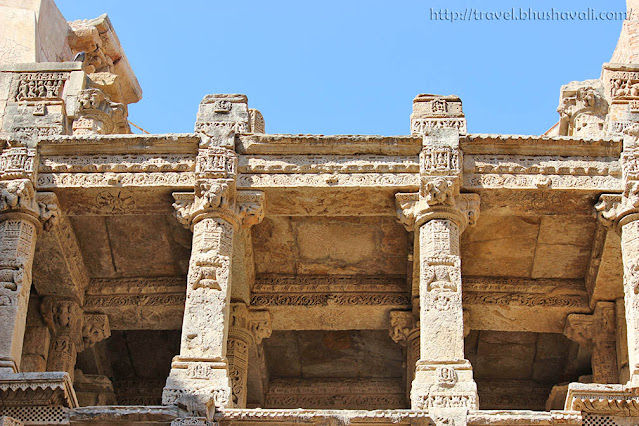
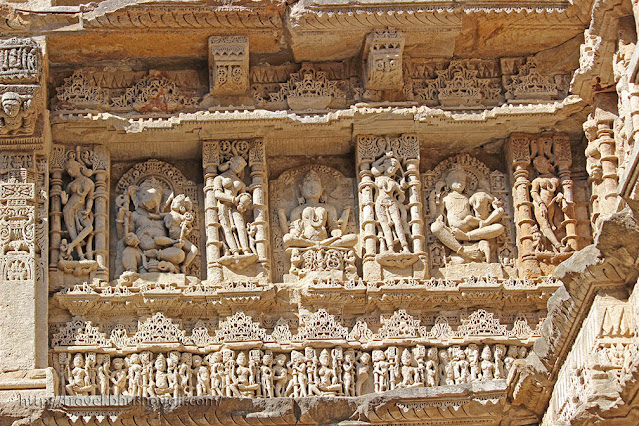


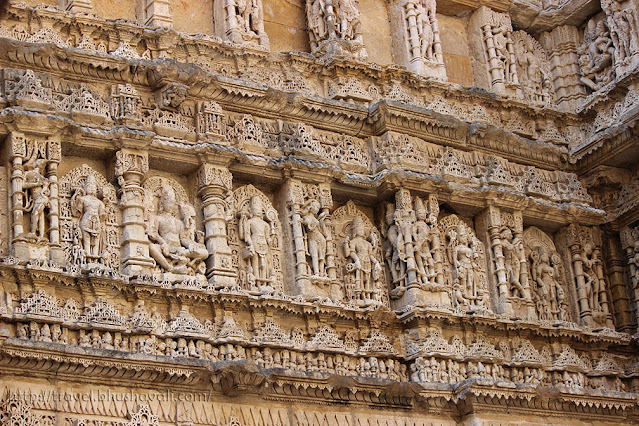

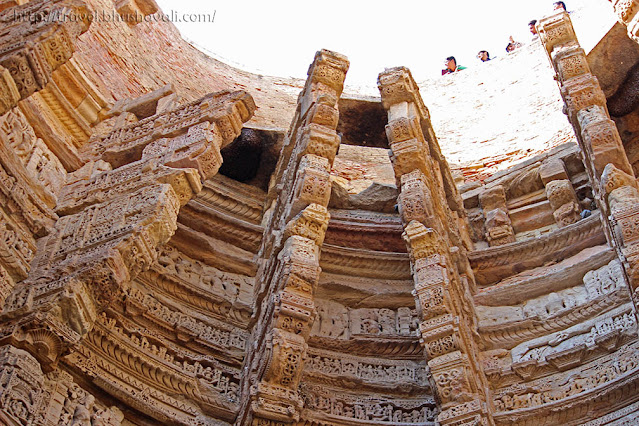



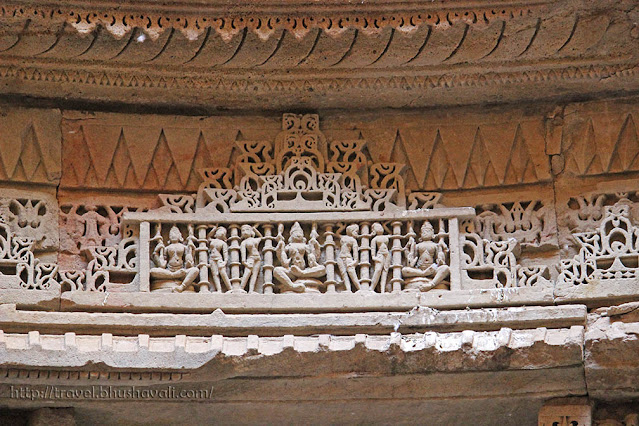
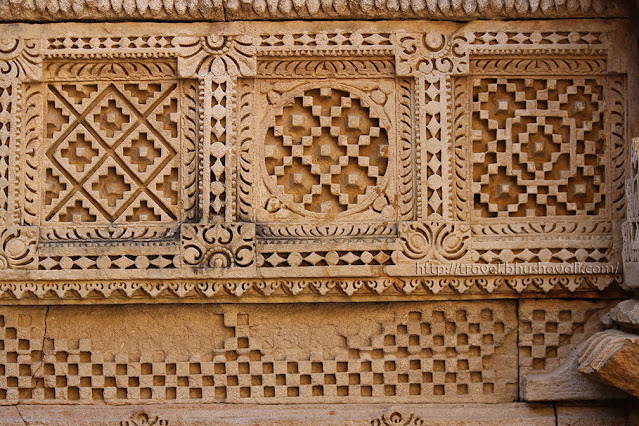



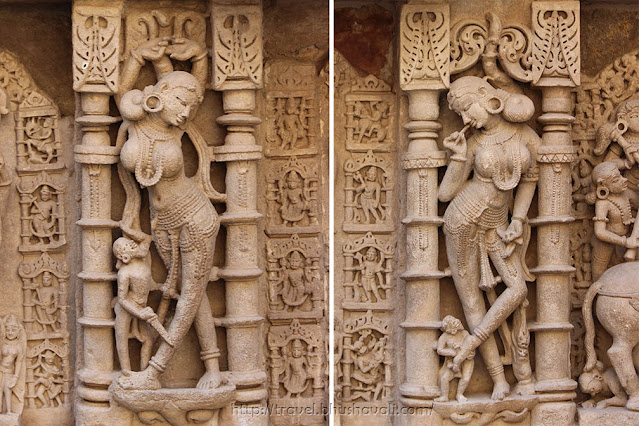
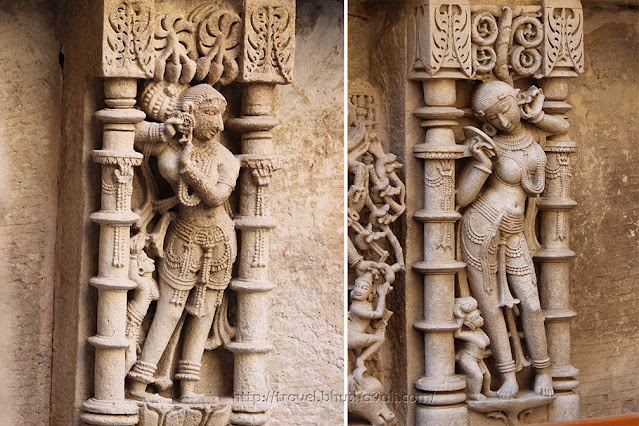


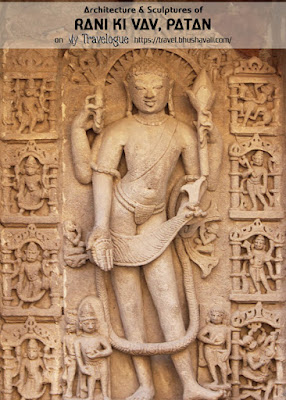


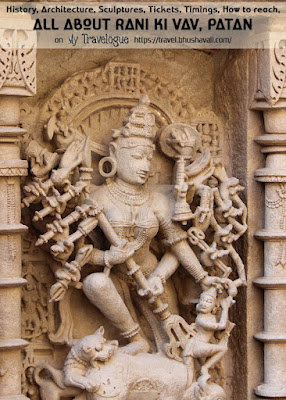





The square planks are design patterns in the traditional and probably one of the most expensive sarees, the Patola Sarees :-)
ReplyDeleteTrue!!!
Deletewonderful pictures, xo Babsi
ReplyDeleteGorgeous place so much history!!
ReplyDeletea beautiful maison
fb/abeautifulmaison
Indeed it is Ghada Fadia!
Deletemagnificient !
ReplyDeleteAren't they, Ashok!
DeleteOut of the world, Very intricate carvings. Compliments for having captured so well!
ReplyDeleteWow... To get that compliment from a pro photographer like you is great! Thanks so much!!!
Delete